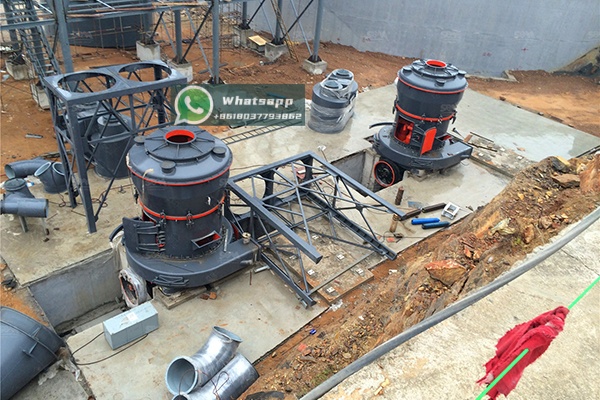In modern chemical industries, the reactivity of powdered materials plays a crucial role in determining process efficiency, product quality, and overall economic viability. The particle size, surface area, and morphology of powders directly influence their chemical behavior, making powder preparation a critical step in numerous industrial applications. This article explores the fundamental principles behind powder reactivity enhancement and the advanced grinding technologies that enable superior performance in chemical processes.
Powder reactivity is fundamentally governed by several key factors that determine how readily materials participate in chemical reactions. Understanding these principles is essential for optimizing industrial processes.
The relationship between particle size and surface area follows an inverse proportionality – as particle size decreases, the specific surface area increases exponentially. This phenomenon dramatically enhances reactivity because chemical reactions primarily occur at the interface between phases. For instance, reducing particle diameter from 100 micrometers to 1 micrometer increases the surface area by a factor of 100, potentially accelerating reaction rates by several orders of magnitude.

Beyond surface area considerations, the internal structure of powder particles significantly impacts reactivity. Mechanical grinding processes can introduce crystal defects, dislocations, and amorphous regions that create high-energy sites more prone to chemical interaction. These structural modifications can lower activation energy barriers, making reactions proceed more readily under milder conditions.
Modern grinding equipment has evolved significantly to meet the demanding requirements of chemical processes. Different grinding technologies offer unique advantages depending on the material properties and desired particle characteristics.
For applications requiring extremely fine powders with narrow particle size distributions, specialized grinding mills deliver exceptional performance. Shanghai Zenith Machinery’s expertise in ultra-fine powder grinding has led to the development of cutting-edge equipment that pushes the boundaries of particle size reduction.
Among their advanced solutions, the LUM Ultrafine Vertical Mill represents a significant technological advancement. This system integrates multiple functions including grinding, drying, classifying, and transportation in a compact design. The intelligent control system ensures consistent product quality while minimizing energy consumption.
| Model | Main Machine Power (kW) | Capacity (t/h) | Size Distribution D97 (μm) |
|---|---|---|---|
| LUM1525 | 220-250 | 1.6-11.5 | 5-30 |
| LUM1632 | 280-315 | 2.0-13.5 | 5-30 |
| LUM1836 | 355-400 | 2.3-15 | 5-30 |
Vertical grinding mills offer significant advantages for chemical processing applications, particularly in terms of energy efficiency and operational flexibility. The LM Vertical Grinding Mill from Shanghai Zenith Machinery integrates five essential functions—crushing, grinding, powder selection, drying, and material conveying—into a single, cohesive system.

This integrated approach reduces the overall footprint while maintaining precise control over final product characteristics. The vertical configuration enables efficient material transport and classification, resulting in consistent particle size distributions ideal for chemical reactions.
| Model | Plate Diameter (mm) | Capacity (t/h) | Output Fineness (μm) | Main Motor (kW) |
|---|---|---|---|---|
| LM130K | 1300 | 10-28 | 170-40 | 200 |
| LM190K | 1900 | 23-68 | 170-40 | 500 |
| LM280K | 2800 | 50-170 | 170-45 | 1250 |
The enhanced reactivity achieved through advanced grinding technologies finds applications across diverse chemical sectors, each with specific requirements for powder characteristics.
In catalyst manufacturing, particle size and surface area directly impact catalytic activity and selectivity. Ultra-fine grinding enables the production of supported catalysts with optimized dispersion of active components, leading to improved efficiency and longer service life. The precise control offered by modern grinding equipment ensures reproducible catalyst performance batch after batch.
Pharmaceutical compounds often exhibit poor solubility that limits bioavailability. Particle size reduction to the micron and sub-micron range dramatically increases dissolution rates, enhancing therapeutic efficacy. The ability to produce narrow particle size distributions is particularly valuable for ensuring consistent drug performance.
In specialty chemical production, particle characteristics influence not only reactivity but also functional properties such as color strength, opacity, and texture. Advanced grinding systems enable manufacturers to tailor these properties precisely to meet specific application requirements.

Beyond technical performance, modern grinding technologies must address economic and environmental imperatives. Energy efficiency, minimal waste generation, and operational reliability are critical factors in equipment selection.
Contemporary grinding systems incorporate sophisticated energy management features that minimize power consumption per ton of processed material. Variable speed drives, optimized grinding media arrangements, and efficient classification systems contribute to significant energy savings compared to conventional grinding approaches.
Closed-system designs prevent dust emissions, while integrated drying capabilities reduce the need for separate processing steps. These features not only improve working conditions but also help chemical manufacturers meet increasingly stringent environmental regulations.
The evolution of powder processing technology continues to address emerging challenges in chemical manufacturing. Several trends are shaping the development of next-generation grinding equipment.
Industry 4.0 concepts are being incorporated into grinding systems through advanced sensors, data analytics, and automated control algorithms. These technologies enable real-time optimization of grinding parameters based on feed material characteristics and desired product specifications.
The integration of additional processing steps within grinding systems represents another significant trend. Simultaneous grinding and surface modification, for instance, can produce powders with tailored surface chemistry optimized for specific chemical reactions.
The enhancement of powder reactivity through advanced grinding technologies represents a cornerstone of modern chemical process optimization. As demonstrated by Shanghai Zenith Machinery’s innovative equipment portfolio, contemporary grinding systems offer unprecedented control over particle characteristics while addressing economic and environmental considerations. The continued advancement of these technologies will undoubtedly unlock new possibilities in chemical manufacturing, enabling more efficient, sustainable, and cost-effective processes across diverse industrial sectors.
For chemical processors seeking to improve reaction efficiencies and product quality, investment in state-of-the-art grinding technology from experienced manufacturers like Shanghai Zenith Machinery provides a proven pathway to enhanced operational performance and competitive advantage.